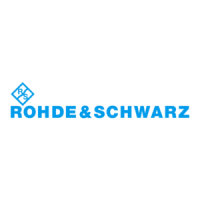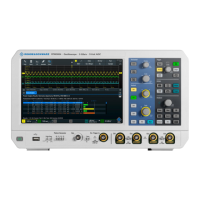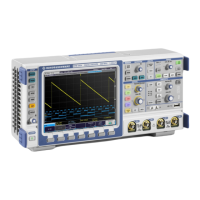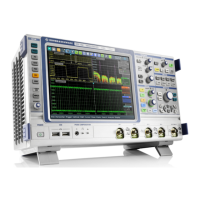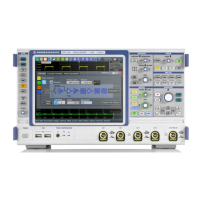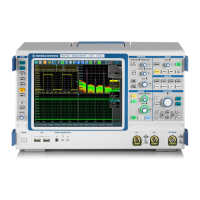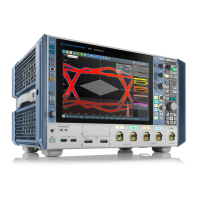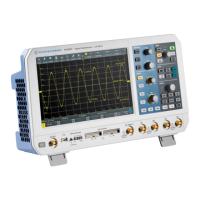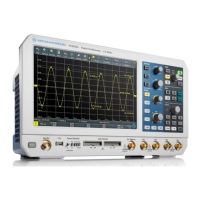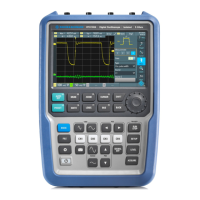Serial bus analysis
R&S
®
RTM3000
260User Manual 1335.9090.02 ─ 09
Format Suffix Example
Octal o
152o, DeviceName
Binary b
01101010b, DeviceName
The maximum supported word size for (unsigned) integers is 64 bits.
# --- Start of PTT file
@FILE_VERSION = 1.0
@PROTOCOL_NAME = i2c
# Following two lines are equal:
7,01h,Temperature
7,01h, Temperature
# A comma must be enclosed in double quotes:
7,01h,"Temperature, Pressure, and Volume"
# A double quote must also be enclosed in double quotes:
7,7Fh,"Highspeed ""Master"" 01"
# Following lines yield the same result:
7d,0x11,Pressure
7h,11h,Pressure
0x7,17d,Pressure
7,17,Pressure
13.2 SPI bus (option R&S RTM-K1)
● The SPI protocol................................................................................................... 260
● SPI configuration...................................................................................................261
● SPI trigger............................................................................................................. 264
● SPI decode results................................................................................................267
13.2.1 The SPI protocol
A 4-channel instrument is required for full support of the SPI protocol, or the MSO
option R&S RTM-B1.
The Serial Peripheral Interface SPI is used for communication with slow peripheral
devices, in particular, for transmission of data streams.
Main characteristics of SPI are:
●
Master-slave communication
●
No device addressing; The slave is accessed by a chip select, or slave select line.
●
No acknowledgement mechanism to confirm receipt of data
●
Duplex capability
Most SPI buses have four lines, two data and two control lines:
●
Clock line to all slaves (SCLK)
SPI bus (option R&S
RTM-K1)
